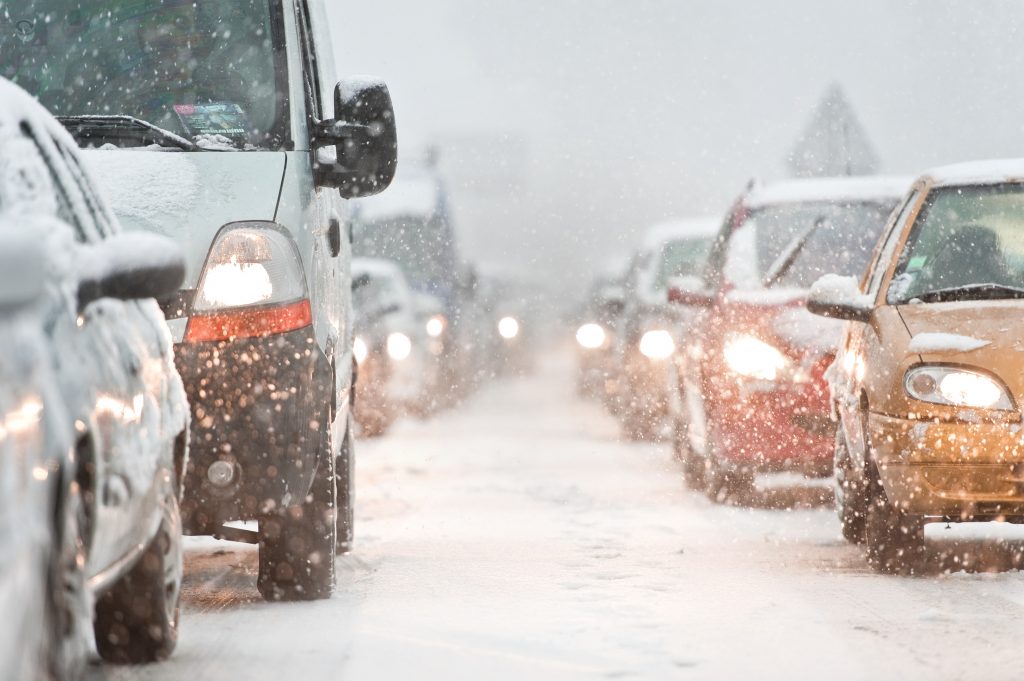
This entry is part of 17 in the series Winter DefenseWinter Defense3 Key Elements of Safe Winter DrivingWalk Safely on Ice (Like a Penguin)It’s Cold Outside: Dress to ProtectRecognize Dangerous Warning Signs of Frostbite and HypothermiaProtect Your Business from Winter Slips & FallsPrepare for Hazardous Winter TravelDon’t Let Ice Freeze Your BusinessTips for Driving in a Winter StormWhat to Pack in Your Roadside Emergency Kit10 Tips for Winter TravelSalting Winter SidewalksSnowblower Safety: Tips to Keep You Safe When Dealing with Snow9 Snow Shoveling Safety TipsHow To Prevent Slipping on Ice This Winter7 Tips to Prevent Frozen Pipes in an Arctic BlastStay Warm While Working in the ColdPrevent Common Winter Losses with Early-Season Maintenance Hard to believe the winter season is upon us again.Looking out the window at the first snowfall of the year is always a beautiful sight.Then the reality sets in—we need to drive in the snow and ice for the next five months.
According to the Federal Highway Administration, more than 1,300 people are killed in car crashes and more than 116,800 people are injured on snowy or icy roads every year.These statistics are a grim reminder of the need to pay closer attention to driving safely during the winter season.3 Key Elements for Safe Winter Driving 1.
Reduce your speed – SLOW DOWN! 2.Stay alert – watch your surroundings 3.Maintain control – don’t panic Read, ‘Prepare for Hazardous Winter Travel’ for more valuable safety tips this winter.
Helpful Tips for Safe Winter Driving include ● Drive slowly ● Increase your following distance to five to six seconds, or more as needed ● Avoid quick or abrupt braking to avoid sliding ● Stay home if it is not necessary to go out ● If you must go out in adverse weather, allow yourself extra travel time Prepare Your Vehicle for Winter Driving Driving in snow, ice and other adverse weather conditions can present a number of challenges.Ensure your vehicle is equipped with emergency items and is fully winterized before the first snowfall of the season.● Check for proper tire inflation to get maximum traction from your tires ● Check wipers and wiper fluid ● Check for proper fluid levels (oil, antifreeze, brake fluid) ● Check lights to assure they are all working properly ● Check that the heater and defroster are functioning properly Keep the Following Items in Your Vehicle in Case of Emergencies ● A spare tire that is properly inflated with a proper changing tool kit or a can of fix-a-flat tire sealant if your car is not equipped with a spare ● A shovel ● Tire chains, if space allows ● Bag of salt or kitty litter for better traction or to melt snow and ice ● A tool kit ● Flashlight ● Extra batteries ● Emergency flares or reflective triangles ● Extra windshield wiper fluid ● An ice scraper and snow brush ● Jumper cables ● Extra blankets, gloves, socks, hat, coat, boots, hand warmers, and high visibility clothing ● Non-perishable foods like canned nuts, dried fruits and hard candy ● Cell phone and charger Don’t Let Poor Winter Weather Catch You off Guard Winter weather requires extra preparation that is well worth the effort in case an emergency arises.
Don’t become one of the winter driving statistics.Slow down and give yourself extra travel time.It’s better to arrive a few minutes late than not at all.
Know your route and consider stopping points if road conditions deteriorate.Finally, consider postponing your trip until weather and road conditions improve.Click here for more winter driving tips.
To learn more about how Society Insurance can help your business mitigate risk, consult with a Society agent in your area.Series NavigationWalk Safely on Ice (Like a Penguin) >>Share this post:FacebookTwitterLinkedinemail
Publisher: Society Insurance








